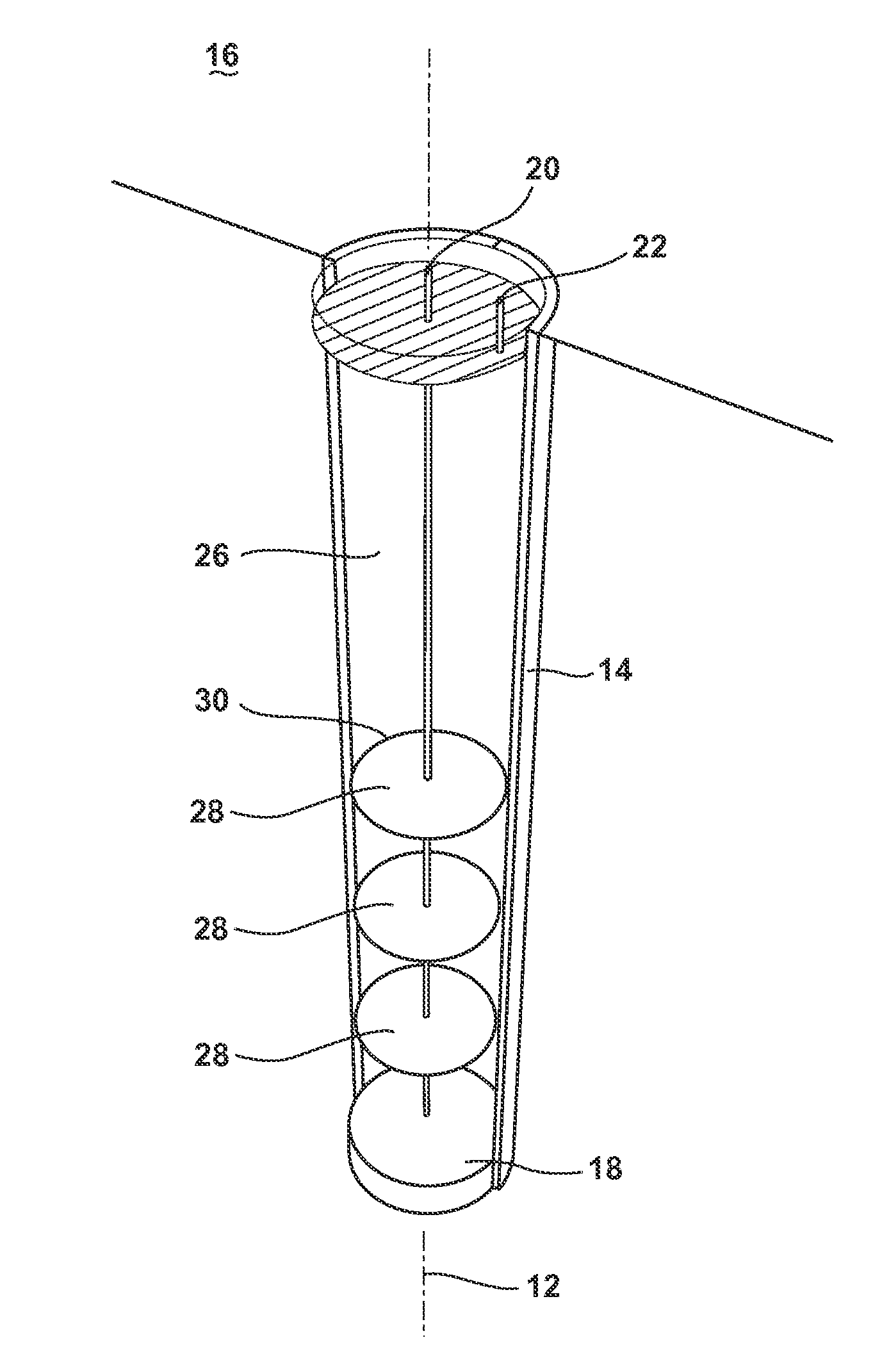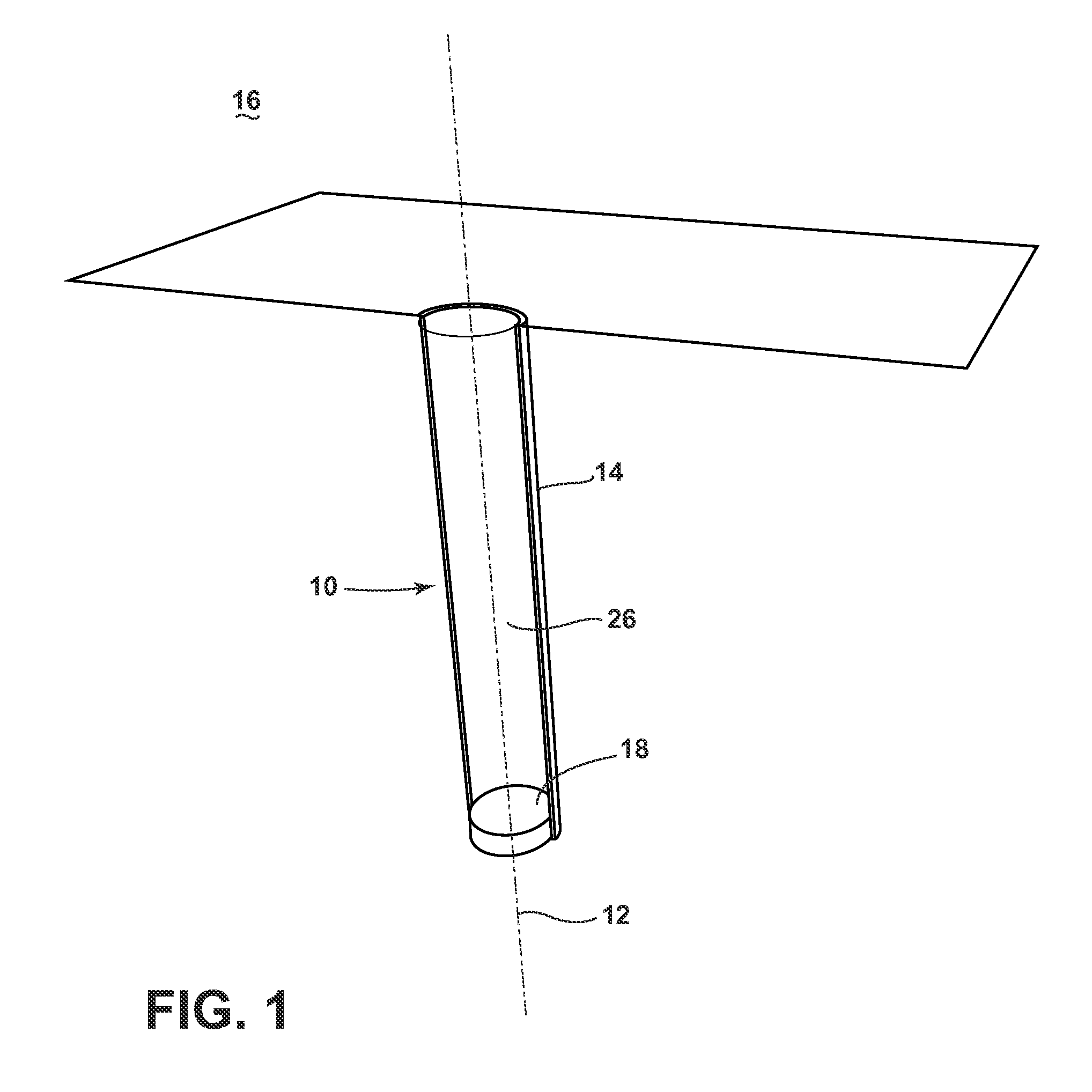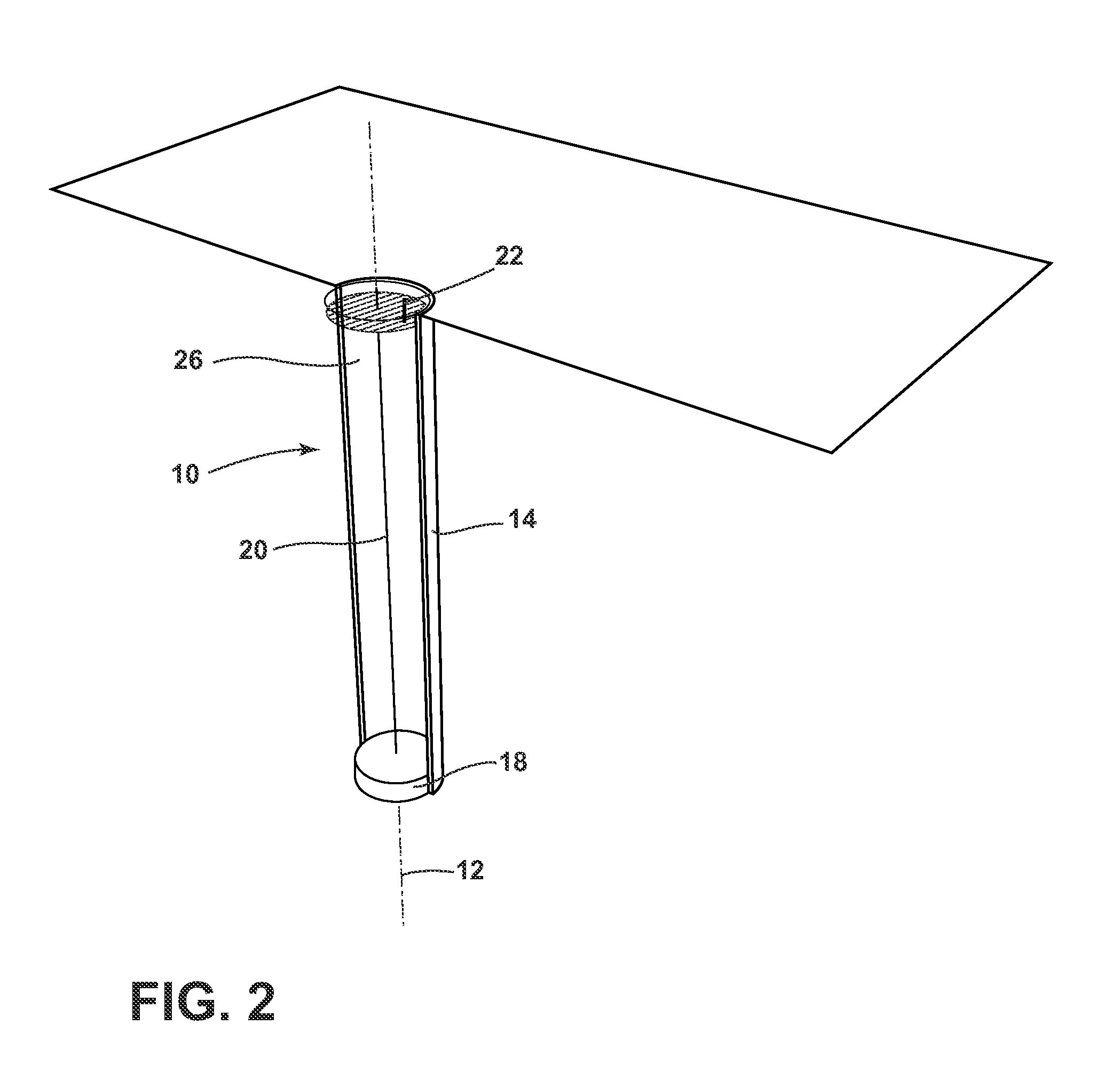Column Buffer Thermal Energy Storage
a thermal energy storage and buffer technology, applied in the field of thermal energy, can solve the problems of not being watertight, not designed to resist water pressure, and the approach cannot be retrofitted to existing buildings without rebuilding
- Summary
- Abstract
- Description
- Claims
- Application Information
AI Technical Summary
Benefits of technology
Problems solved by technology
Method used
Image
Examples
first embodiment
[0084]This section outlines the invention.
[0085]This embodiment describes a waterproof column 10 excavated into the earth as show in FIG. 1. As per the previous definition of a column, columns of many shapes are possible. Columns which change shape as one proceeds along the axis 12 are also possible. This preferred embodiment describes a column 10 which is a cylinder while not excluding other shapes previously described. The cylinder is preferred as the circular cross section provides the greatest hoop strength against both inward and outward forces. Additionally, the circular cross section allows the use of centrifugally cast concrete application technology to easily form cylindrical walls 14 strongly mated to the excavated earth walls. The circular cross section also allows the strongest geometry when placing reinforcing materials like basalt twine that reinforce against forces acting outwards on the column walls 14.
[0086]The inner diameter of the column 10 shown in FIG. 1 may ran...
second embodiment
[0095]This section outlines the invention.
[0096]This embodiment contains all the elements of the first embodiment, but adds a series of heat stratification baffles 28 as shown in FIG. 5. The baffles 28 are constructed to be several inches smaller in diameter than the column diameter allowing a space for liquid 26 to pass between the baffle edge 30 and the column's inner surface. Due to fluid properties, a slow moving liquid film will form on the interface between the heat storage fluid 26 and the inner surface of the column walls 14. Warm fluid will tend to rise, but, all else being equal, will rise through the central axis 12 of the column 10. The heat stratification baffles 28 force this rising water past the inner surface of the column walls 14, increasing heat transfer by increased temperature and forced mixing of the liquid film. The baffles 28 may be made of many rigid, waterproof materials including, but not limited to corrugated plastic sheet, plastic, metal, and wood. The p...
third embodiment
[0097]This section outlines the invention.
[0098]This embodiment contains all the elements of the second embodiment, but adds spacers 32 to the outer edges 30 of the heat stratification baffles 28 as shown in FIG. 6. The spacers 32 keep the baffles 28 from occluding liquid movement from a large section of one side of the column as may happen when the baffles 28 rest on that side. Occluded sections will have lower heat transfer due to lower fluid movement. The spacers32 greatly reduce the occlusion. Spacers 32 may be formed from, but not limited to notches in the baffle material and material inserted in the edges 30 of the baffles 28. The preferred embodiment of spacer formation is notches in the baffle material is this is simplest and reduces manufacturing time. The preferred spacer formation embodiment does not exclude other spacer formations as previously described.
[0099]This section outlines a fourth embodiment of the invention.
[0100]This embodiment contains all the elements of th...
PUM
 Login to View More
Login to View More Abstract
Description
Claims
Application Information
 Login to View More
Login to View More - R&D
- Intellectual Property
- Life Sciences
- Materials
- Tech Scout
- Unparalleled Data Quality
- Higher Quality Content
- 60% Fewer Hallucinations
Browse by: Latest US Patents, China's latest patents, Technical Efficacy Thesaurus, Application Domain, Technology Topic, Popular Technical Reports.
© 2025 PatSnap. All rights reserved.Legal|Privacy policy|Modern Slavery Act Transparency Statement|Sitemap|About US| Contact US: help@patsnap.com



